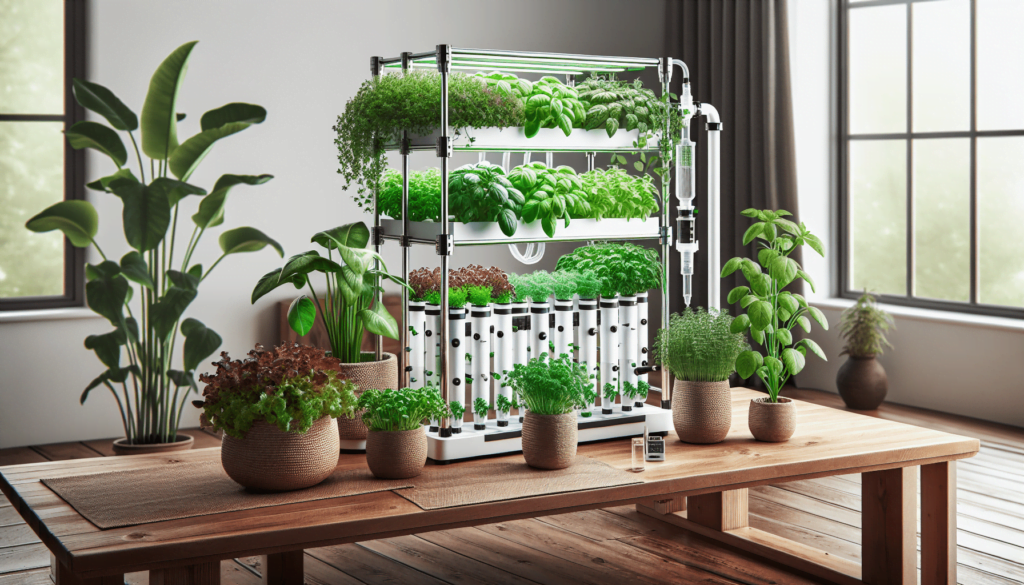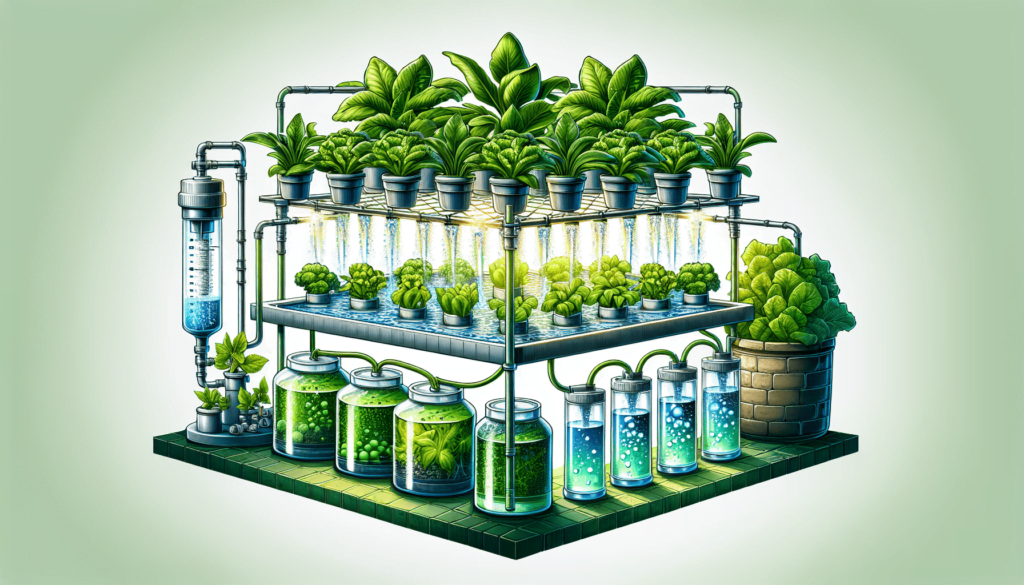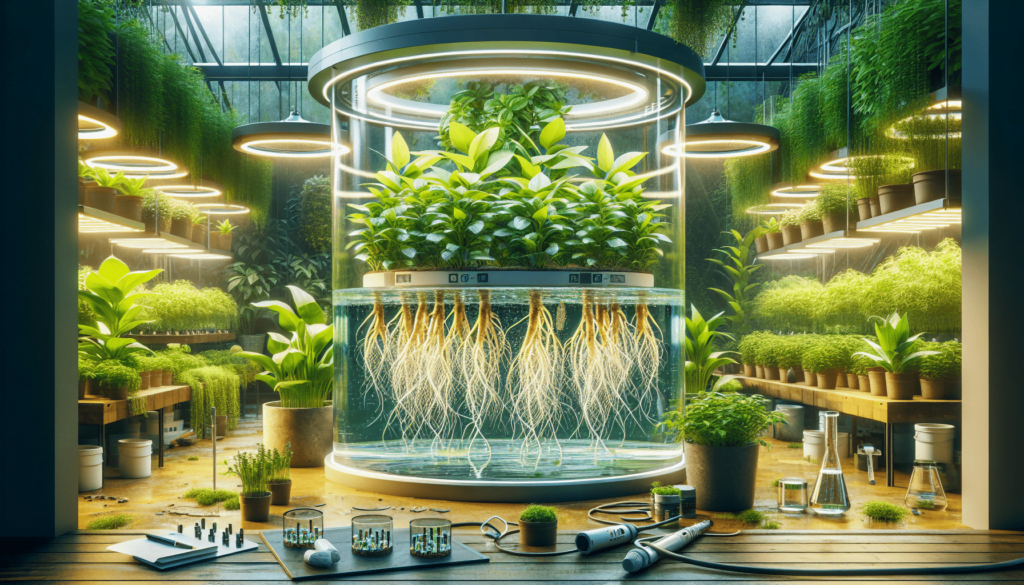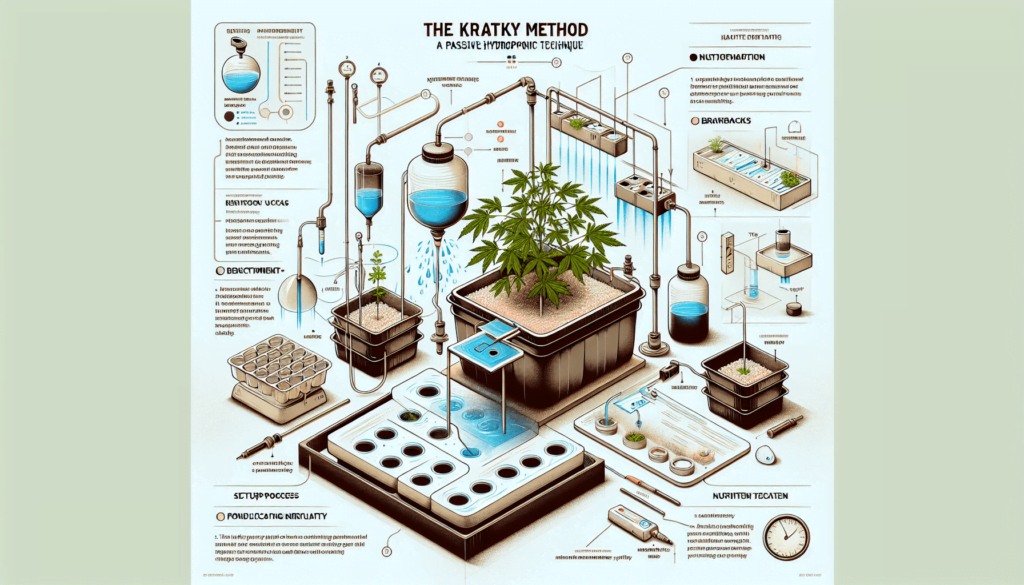Kick-starting your journey into the world of hydroponics certainly piques the interest of many amateur horticulturists. Transforming from an enthusiastic amateur into a green-thumbed professional often sounds more intimidating than it is, particularly when it comes to utilizing the Kratky Method Hydroponics System. But fear not, as this beginner’s guide has been crafted to demonstrate that the process of nurturing plants and greens using this system doesn’t have to be as daunting as it may initially seem. Boasting a wealth of simplified, comprehensive instructions and insights, the guide endeavors to illuminate all corners of the Kratky Method, from its fundamental principles to its practical application in your own green space.
Understanding the Kratky Method
When we talk about the Kratky Method, we’re referring to a simple yet effective way of growing plants using a hydroponics system. Hydroponics, if you’re not familiar with it, means growing plants directly in water without any soil. In essence, the Kratky Method involves putting plants in a net pot, filling it with growing medium like perlite or rockwool, and placing the pot in a container filled with water and nutrient solution.
What is the Kratky Method
The Kratky Method is a method of passive hydroponics. This means that we don’t use any pumps, motors, or electricity to keep the water flowing around the plant roots. The plants draw the water they need directly from the container into their root system in a self-sustaining fashion. This simplicity is what makes Kratky Method so attractive to beginners and hobbyists interested in hydroponics.
The history behind the Kratky Method
Named after its developer, Dr. Bernard Kratky, this method was designed for developing regions where resources might be limited. Dr. Kratky, alongside his colleagues at the University of Hawaii, sought a method of hydroponics that required minimal effort or equipment. Their dedication led to what we now know as the Kratky Method — a low-tech, water-saving solution for growing food.
Benefits and drawbacks of the Kratky Method
Just like every other methodology, there are both pros and cons to the Kratky Method. Key advantages include cost-effectiveness, simplicity, and reduced resource consumption, which makes it perfect for beginners and those with limited space or budget. However, the Kratky Method might not be suitable for all plants, especially larger or longer-term plants. Also, water evaporation and nutrient depletion can be potential challenges if not actively monitored.
Setting Up Your Hydroponic System
Now that we’ve established a baseline understanding of the Kratky Method, let’s delve into how to develop your hydroponic system.
Materials you will need for the Kratky Method
The simplicity of the Kratky Method means we need only a few crucial items: seeds for your chosen plant, a net pot or basket, growing medium like perlite or rockwool, a growing container like a jar or bucket, and water with a hydroponic nutrient solution.
Choosing a location for your hydroponic system
Location is key when setting up your Kratky system. You’ll need a space that receives ample light, but is also warm and away from extremes in temperature or weather. Avoid areas that get too hot or too cold – these conditions can negatively affect plant growth and health. Indoors, a sunny windowsill is a classic option.
Step-by-step guide to setting up your Kratky system
Setting up your Kratky system begins with preparing your growing container. Drill a hole in the container lid, and insert your net pot filled with your growing medium. Add seeds or transplanted seedlings into the growing medium. Fill the container with your nutrient solution until it just touches the bottom of the net cup. Cover any exposed water to reduce evaporation and inhibit algae growth. Now, simply watch as the plant takes root and grows!

Choosing the Right Plants to Grow
Considerations when choosing your plants
When considering what plants to grow in your Kratky system, look to plants that prefer a high-humidity environment, such as leafy greens. Remember, not every plant thrives under this method, so research and planning are important.
Best plants to grow with the Kratky Method
Leafy greens and herbs are excellent for Kratky systems. Choices like lettuce, spinach, kale, chard, mint, basil, or cilantro thrive while requiring minimal maintenance.
Plants to avoid in a Kratky system
Plants that require large amounts of water or are heavy feeders (e.g. tomato plants, cucumber plants) often do not fare well in a Kratky system. Also, longer-term plants may outgrow or deplete the water resources in a Kratky setup.
Preparing Your Seeds and Seedlings
Before you begin planting, you’ll need to adequately prepare your seeds and seedlings for the transition to the hydroponic system.
How to prepare seeds for hydroponics
To prepare your seeds for hydroponics, soak them in water overnight to speed up the germination process. Then, simply insert them into your rockwool or other growing medium, with the pointed end downwards.
Transplanting seedlings into a Kratky system
Transplanting seedlings into a Kratky system is essentially similar to the seeds. Nurture them in a growing medium until they develop a stable root system. Once signs of growth are showing, nestle them into the growing medium within your net cup, ensuring roots reach the nutrient solution.
Caring for your seedlings in the initial stages
During the early stages, it’s crucial to ensure your plants are in an optimal growing environment. Keep an eye on light exposure, water levels and the overall health of your seedlings. The early stages of growth are when your plants are most susceptible to potential challenges.

Nutrient Solution for Your Hydroponic System
The nutrient solution functions as the ‘soil’ or ‘feeding ground’ for your plants in a Kratky system. It’s comprised of water and essential plant nutrients.
What is nutrient solution
The nutrient solution is simply water mixed with a special mix of plant nutrients, designed to provide all the minerals and elements a plant would normally get from the soil. It’s crucial to the health and success of your plants.
How to make and use nutrient solution
Making your nutrient solution is straightforward: mix the recommended amount of hydroponic nutrients into your clean water, and ensure it’s well dissolved. A good rule of thumb is to start with a half or quarter dose of nutrients and then increase as plants grow.
Adjusting Nutrient Solution for different stages of growth
Different stages of a plant’s life require different nutrient levels. For example, plants in the flowering or fruiting stage often need higher Phosphorus levels. Always refer to your nutrients’ instructions and watch your plants for signs they may be lacking – or getting too much – of a specific element.
Maintaining Your Kratky System
Once your system is up and running, successful maintenance involves keeping everything tidy, monitoring plant health, and replacing your nutrient solution when necessary.
Keeping your system clean
Hydroponic systems can become a breeding ground for algae and pathogens if not kept clean. Cleaning your containers between growing cycles is essential, as is preventing light from reaching the nutrient solution.
Monitoring your plants’ growth and health
Keep an eye on your plants for signs of stress or nutrient deficiency. These include yellowing leaves, stunted growth, or wilted leaves. Be vigilant and make necessary adjustments to water levels, light exposure, and nutrient solution.
Replacing nutrient solution
Over time, your plants use up the nutrients in the solution and the water level will drop, revealing more and more of the plant roots to the air. Keep your system filled to the bottom of the net pot, but don’t submerge the plant roots completely: they need contact with the air too.
Pest and Disease Management
Hydroponic systems aren’t immune to pests and diseases. Let’s explore how to manage these challenges.
Common pests and diseases in hydroponic systems
Despite being soil-free, hydroponics systems can still attract numerous pests and diseases. From spider mites or aphids to fungal infections, mold, or root rot, prevention and early intervention are key.
Preventative measures against pests and diseases
Establishing a clean environment helps prevent many diseases and pest problems. Regularly inspect and clean your equipment, and do a weekly check of your plants. Isolate new additions to your garden until you’re sure they’re pest-free to prevent contamination.
Treating infected plants
When treating for pests and disease, factor in the severity of the infestation, the type of pest, and the overall health of the plants. Non-toxic, organic pesticides can be used, or physical removal of pests. For diseases, cutting out the infected parts of the plant and maintaining a clean growing environment usually helps.
Harvesting Your Plants
Watching your plants grow from seed to harvest is incredibly rewarding.
When to harvest your plants
Your plants’ readiness for harvest depends on the specific plant and your personal preference. Generally, leafy greens can be harvested when they’ve reached the size you desire. Always remember to harvest gently to avoid causing harm to your plants.
How to harvest your plants
Harvesting in hydroponics is similar to traditional gardening. Using a clean, sharp tool, cut off the plants at the base whilst avoiding damage to the roots for continual growth. Always leave a few leaves behind to allow for regrowth.
Post-harvest care of your system
After harvesting, clean your container and prepare it for the next plant or growing cycle. Observe your remaining plants for signs of stress and adjust your system accordingly to cater to their needs.
Troubleshooting Common Problems
Despite all of the preventive measures, you might still encounter some problems in your Kratky system.
Dealing with slow growth or wilted plants
Slow growth or wilting could be a sign that your plants aren’t getting enough light, nutrients, or water. Double-check your nutrient solution, water level, and lighting setup.
Solving nutrient deficiency problems
If your plants’ leaves are yellow, purple, or curled, you might have a nutrient issue. Depending on your plants and the symptoms, you may need to adjust the nutrient concentrations or pH of your solution.
Addressing pest and disease issues
Regularly inspect your plants and growing medium for signs of pests and diseases, and at the first sign of trouble, remove affected plants from your system immediately to prevent the problem from spreading.
Expanding and Advancing Your Hydroponic System
Once you’ve mastered the basics of the Kratky method, you might want to consider expanding your system or experimenting with new techniques.
Moving beyond the Kratky Method
Once you’re comfortable with the Kratky method, you might want to explore active hydroponics systems. These can provide more precise control and potentially higher yields, though they also require more equipment and maintenance.
Turning your hobby into a small-scale farm
If you’ve seen success with your small-scale setup, why not scale up your operation? With a larger space and more resources, you could produce enough to sell at a local farmers market, or even supply restaurants and grocery stores in your area.
Incorporating technology into your hydroponics system
Embrace the potential of technology to enhance your hydroponic gardening. This might include adding automatic pH and nutrient monitors, implementing a lighting schedule with automated timers, or even experimenting with AI and machine learning to optimise your plant growth.
And that’s your comprehensive guide to the Kratky Method and hydroponics. With patience, research, and a bit of practice, you too can enjoy the benefits of this soil-less, sustainable form of gardening. Happy farming!
Forum
Got something to share or a question to ask? Jump in and start a conversation! Whether it’s tips, advice, or just sharing your experiences, we’d love to hear from you. Don’t be shy—your input could inspire or help someone else!- This forum has 1 topic, and was last updated 8 months ago by .
- Topic
- Voices
- Last Post
- You must be logged in to create new topics.


